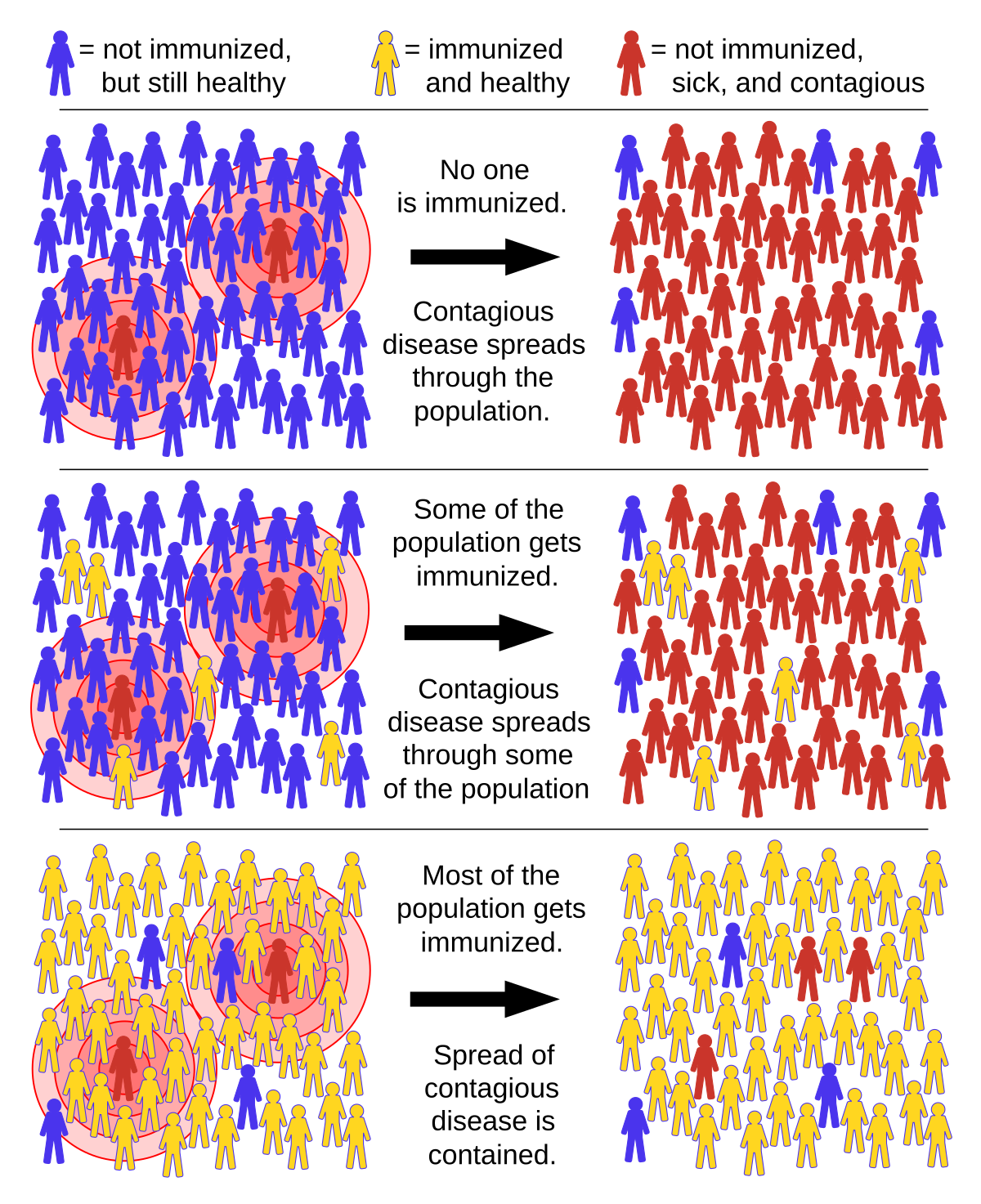As countries continue to administer various COVID-19 vaccines to their citizens, the words "herd immunity" are increasingly thrown around in many circles. Let us examine the meaning and benefits of herd immunity.

What is herd immunity?
A.W Hedrich, a researcher studying the spread of measles in the United States between 1900 and 1931 observed that as more infected children recovered from measles and became immune to the disease, the rate of transmission of measles decreased and the children who had no immunity were protected. He then coined the term "herd immunity" to describe this phenomenon.

Credit - Wikipedia
Herd immunity, also known as community protection, can be defined as a form of indirect protection from some infectious diseases when a sufficient proportion of a population has become immune to an infection, as a result of vaccination or previous exposure to the infection, thereby reducing the probability of individuals who lack immunity to become infected. If you struggle to remember the full definition of herd immunity, think of it as taking one for the team.
The fact is that not everyone is capable of developing a proper immune response to an infectious disease. Elderly people and babies tend to have weaker immune systems. Recipients of organ transplants are placed on immunosuppressive drugs to minimise the risk of organ rejection. HIV/AIDS sufferers also have compromised immune systems. Herd immunity offers a layer of protection to these vulnerable groups.
The main factor that underpins herd immunity is the number of people in the community that are or must become immune to an infectious disease through vaccination or natural exposure to an infection. Each immune individual acts as a biological shield and does not contribute to the spread of the disease to vulnerable members of society.
Alot of the anti-vaccine advocates have suggested that achieving herd immunity by simply letting the virus run its course through the entire population would be far more beneficial economically. While that argument has its merits, it does seem to neglect the obvious dangers involved: more deaths, more severe cases with life-long debilitating effects on health which will drive up healthcare costs and reduce the amount of attention given to other diseases.
Many experts agree that a more logical approach would be to artificially achieve herd immunity through large scale vaccination efforts. Vaccines help the body build an immune response without the need to first endure the nasty complications associated with natural infection.
Herd Immunity Threshold
In order to reach herd immunity, a significant percentage of a population must become immune. This is commonly referred to as the herd immunity threshold or H.I.T for short. The herd immunity threshold of an infectious disease depends largely on the rate of transmission of that disease within a population. The higher the transmission rate, the higher the number of people that must be immunised to control the spread of the disease and achieve herd immunity. Measles has a threshold of 95% -- that means 19 out of every group of 20 persons must be immunised against measles for herd protection to be enjoyed. For Polio, the threshold is about 80%.
Lots of estimates of the herd immunity threshold for COVID-19 have been widely circulated, which is not surprising, considering the fact that we are still learning alot about the novel coronavirus. Some researchers are of the opinion that at least 50% of the population would have to be immunised for herd immunity to take effect.
Other scientists place the threshold much higher at 67%. While we are not certain about the exact numbers, we are certain that as more people become immune to COVID-19, we get ever closer to achieving the much anticipated herd immunity.
Is herd immunity permanent?
Short answer is probably not. Nature has a funny way of fighting back. As we push harder to eliminate a disease, we also place pressure on the causative organism to evolve and adapt to our assault. Anybody who gets an annual shot of the flu vaccine can attest to the ever-changing nature of influenza viruses. It feels like shooting at a moving object. This is known as viral mutation. You can read more about it here.
As viruses mutate, new strains inevitably emerge which are less susceptible to our counter-measures and could nullify our previously achieved herd immunity. We must remain vigilant and adaptive in this biological equivalent of the game of chess.
I would like to conclude with a simple question: Will you take one for the team?
Comments
Post a Comment